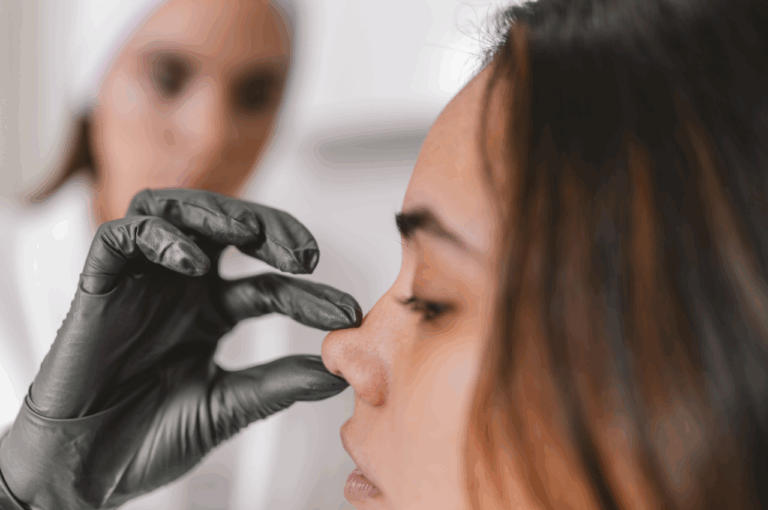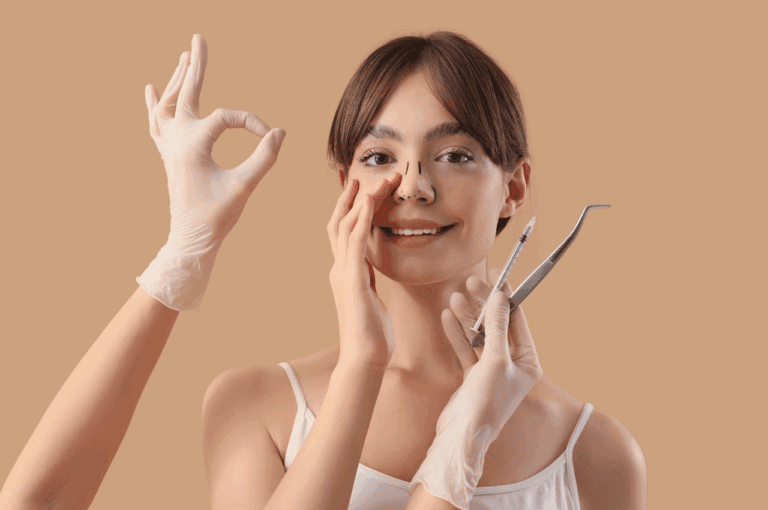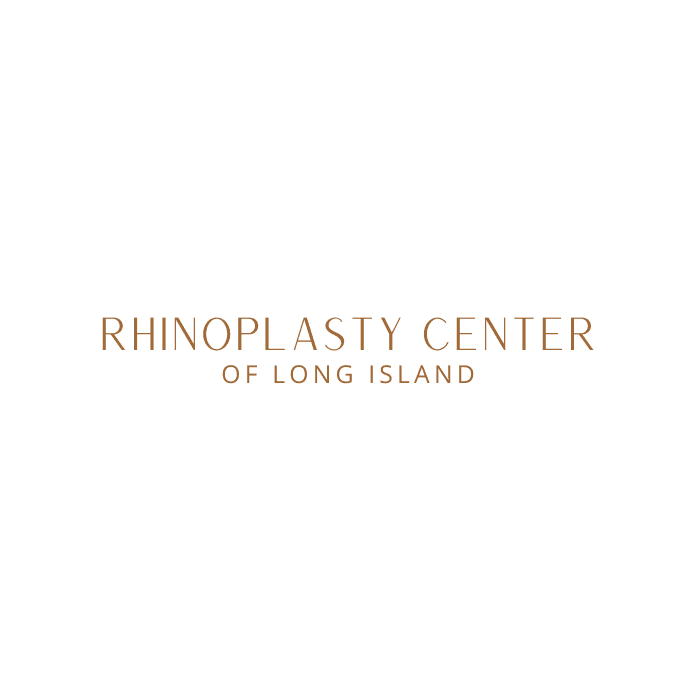Considering a rhinoplasty can be an exciting step toward personal confidence and facial harmony. Yet, for many patients at the Rhinoplasty Center of Long Island, concerns about scarring often play a big role in their decision-making.
Most people want results that look natural and are free from visible signs of surgery. Understanding the realities of rhinoplasty scars and knowing how to minimize them can help you approach your procedure with comfort and clarity.
Let’s explore what causes rhinoplasty scars, how techniques affect their appearance, and what you can do to encourage the best healing possible.
Key Takeaways
- Scar visibility varies: Scarring from rhinoplasty is generally minimal, especially with the closed technique.
- Surgical technique impacts scars: Open and closed rhinoplasty approaches place incisions in different areas, affecting whether scars are visible.
- Healing plays a major role: Proper post-operative care can significantly reduce the chance and appearance of visible scars.
- Patient factors matter: Genetics, skin type, and even lifestyle impact how your body heals and how noticeable scars may become.
- Prevention begins pre-surgery: Choosing an experienced rhinoplasty surgeon greatly influences scarring risk and outcome.
- Treatments support scar minimization: Options such as silicone gels, laser therapy, and taping can all help scars heal optimally if needed.
- Expect some healing time: Scars usually fade considerably within months, though full maturation might take a year.
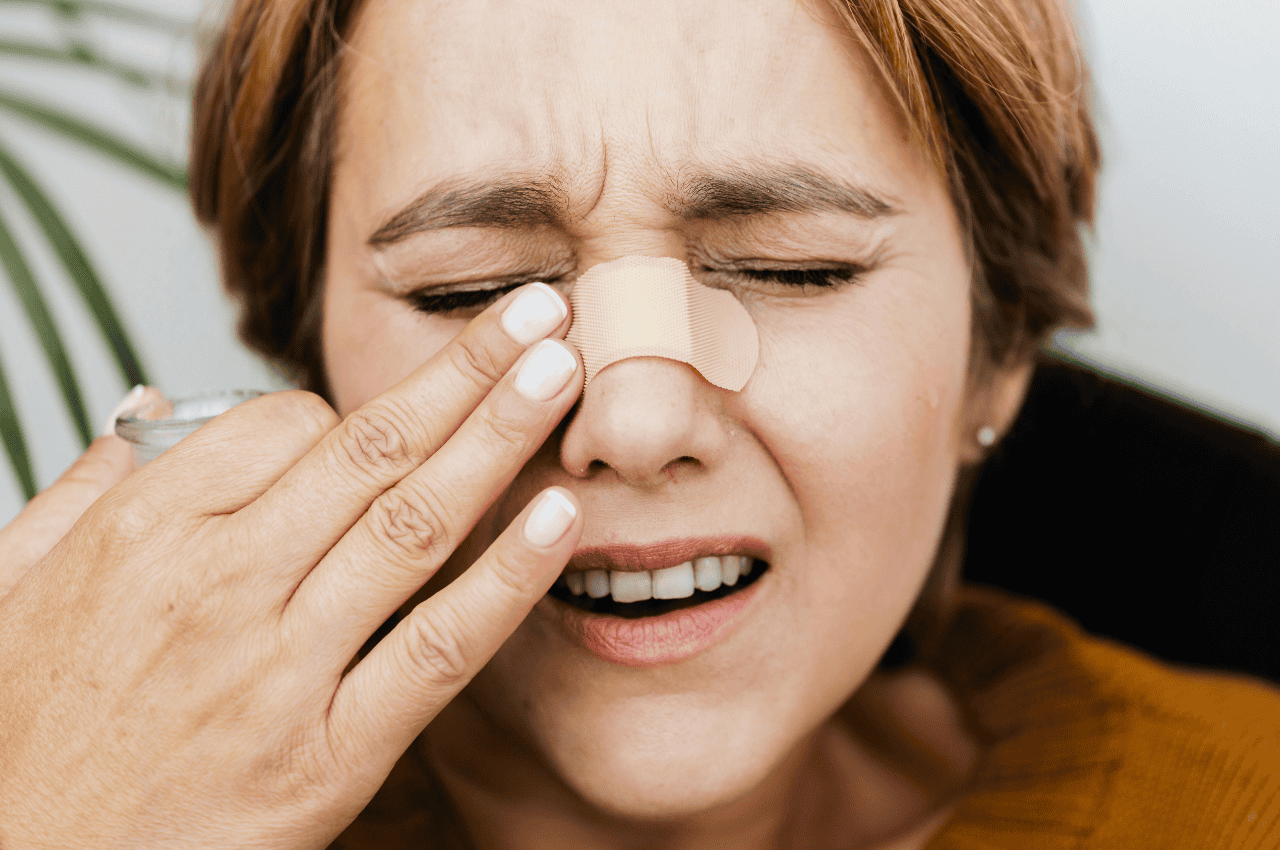
Understanding Rhinoplasty Incisions and Scarring
The first step in understanding rhinoplasty scars is knowing where incisions are made. Scars primarily result from how the surgeon accesses your nasal structures.
Open vs. Closed Rhinoplasty Approaches
Rhinoplasty can be performed through two main approaches, open and closed rhinoplasty. The closed technique involves incisions entirely within the nostrils. The open technique uses the same internal cuts but adds a small incision at the base of your nose.
The open approach gives the surgeon greater visibility, which may be needed for more complex cases. In both cases, skilled suturing and precise placement help limit scarring.
Incision Placement and Scar Location
The nose has a detailed anatomy made up of bone, cartilage, and a narrow strip of tissue between the nostrils called the columella. These structures influence which surgical technique is best. Closed rhinoplasty keeps all incisions inside the nose, while open rhinoplasty places one small incision across the columella.
This incision is usually less than a centimeter long. It heals to a thin, flat line that’s well camouflaged in most patients.
What Determines If You Will Have a Visible Scar?
Several key factors affect whether a rhinoplasty scar will be visible after healing. While surgical technique is critical, other elements play a role, too.
Skin Type and Thickness
Your skin’s thickness and qualities matter. Thicker or oilier skin sometimes develops more robust scars and may take a bit longer to settle down.
On the other hand, patients with thinner or fair skin may notice temporary redness but typically see scars fade quickly.
Genetics and Personal Healing Tendency
Each person’s genetic makeup affects healing. Some people naturally form thicker scars called hypertrophic scars or keloids. If you or your family have a history of prominent scars, discuss this before surgery.
Even so, keloids in the columella area are rare.
Surgeon’s Technique and Skill
Your surgeon’s precision and gentle handling of tissues make a significant difference. At our Long Island practice, careful closure and meticulous suturing minimize tension on the incision, which helps create the least noticeable scar possible.
Post-Operative Care
How you care for your incision after surgery directly impacts scar formation. Following your surgeon’s instructions and keeping the area protected from sun and trauma will help the scar mature and fade well.
Common Types of Scarring After Rhinoplasty
While most patients heal with barely noticeable scars, a few different scar types can occasionally occur.
Fine Flat Scars
The vast majority of open rhinoplasty scars are thin, flat, and nearly invisible after several months. These scars blend into the natural shadows beneath the nose.
Hypertrophic and Keloid Scars
Although uncommon in the columella area, some patients can form raised, thickened scars. These stand out more but can often be improved with treatments like steroid injections or laser therapy.
Pigmentation Changes
Less frequently, scars may look darker or lighter than the surrounding skin. Proper sun protection is the best way to prevent this outcome as you heal.
All scars improve with time. Persistent concerns can be addressed with medical or cosmetic options tailored to your skin type.
Factors That Increase the Risk of Noticeable Scarring
Some elements outside of incision type can influence your chance of a visible scar. Below are several important risk factors to know about before surgery.
- Patient-specific factors: Your age, skin type, ethnicity, and family history all influence healing patterns. Teenager patients or those with a family tendency toward thick scars may face a slightly higher risk.
- Medical conditions: Health issues that affect circulation or collagen production, such as diabetes or autoimmune diseases, can interfere with ideal healing.
- Smoking and lifestyle: Nicotine constricts blood vessels, slowing healing and raising the risk of poor scarring. Other habits like poor nutrition further affect recovery.
- Aftercare: Not following post-procedure instructions, scratching or picking at your incision, or sun exposure may worsen how a scar ultimately looks.
Understanding your personal risks helps you have realistic expectations and take steps to minimize problems.
How Surgeons Minimize Rhinoplasty Scars
Skilled surgeons use various strategies to ensure scars are as discreet as possible. At the Rhinoplasty Center of Long Island, we focus on every detail, from incision planning to post-surgical care.
Pre-Operative Planning
Good scar outcomes start before your procedure. Your surgeon will:
- Assess your nose type and history
- Discuss the risk factors of rhinoplasty
- Select the best technique for your anatomy
Intra-Operative Techniques
During surgery, special attention goes into making and closing incisions:
- Fine instruments and magnification reduce tissue trauma.
- Sutures are selected for your skin type, often dissolvable and very fine.
- Incisions are placed where shadows fall naturally and are kept as short as possible.
Post-Surgical Support and Guidance
After your procedure, you will receive detailed instructions on wound care. Early follow-up visits help us monitor healing. Should any signs of abnormal scarring arise, early treatment can keep issues minimal.
Recovery: Timeline of Rhinoplasty Scar Healing
Understanding the typical phases of scar healing can set your expectations and guide your self-care.
The Stages of Scar Maturation
Most rhinoplasty scars go through these predictable stages:
- Initial healing (first month): During the first three weeks after rhinoplasty, the incision site may look pink, slightly raised, or tender. Swelling in the nose is also common.
- Scar flattening (months 2–3): The scar line becomes thinner and flatter, as redness begins to fade.
- Final maturation (months 6–12): Scar pigmentation continues to normalize. In most cases, the scar becomes difficult to see under natural lighting.
Scar healing is gradual, and final results can take up to a year or more.
What’s Normal and What’s Not
It’s normal to experience changes that follow typical rhinoplasty swelling stages. Some degree of temporary redness or firmness is common early on. Itching or minor tightness may occur but usually subsides over months. If you notice significant thickening, persistent discoloration, or discomfort, contact your surgeon for early evaluation.

How to Care for Your Rhinoplasty Scar After Surgery
Proper aftercare is crucial for minimizing scar formation. By following a careful routine, you give your body the best chance to heal beautifully.
Daily Care Instructions
In the first weeks after surgery:
- Keep the incision clean and dry
- Avoid scrubbing the nose or applying makeup directly onto the suture line
- Use ointments prescribed by your surgeon to support healing
When washing your face, use gentle motions and avoid pulling on the skin.
Sun Protection
One of the most important steps in scar care is protecting your skin from UV rays. Even after the incision has healed, sun exposure can cause scars to darken or remain red.
Apply broad-spectrum sunscreen with SPF 30 or higher when outdoors. Wearing sunglasses with a bridge that doesn’t touch the nose can help shield healing areas.
Hands Off the Healing Area
Do not pick at crusts or small scabs, as this can increase scarring. If you experience itching, try a cool compress or ask your surgeon about topical products.
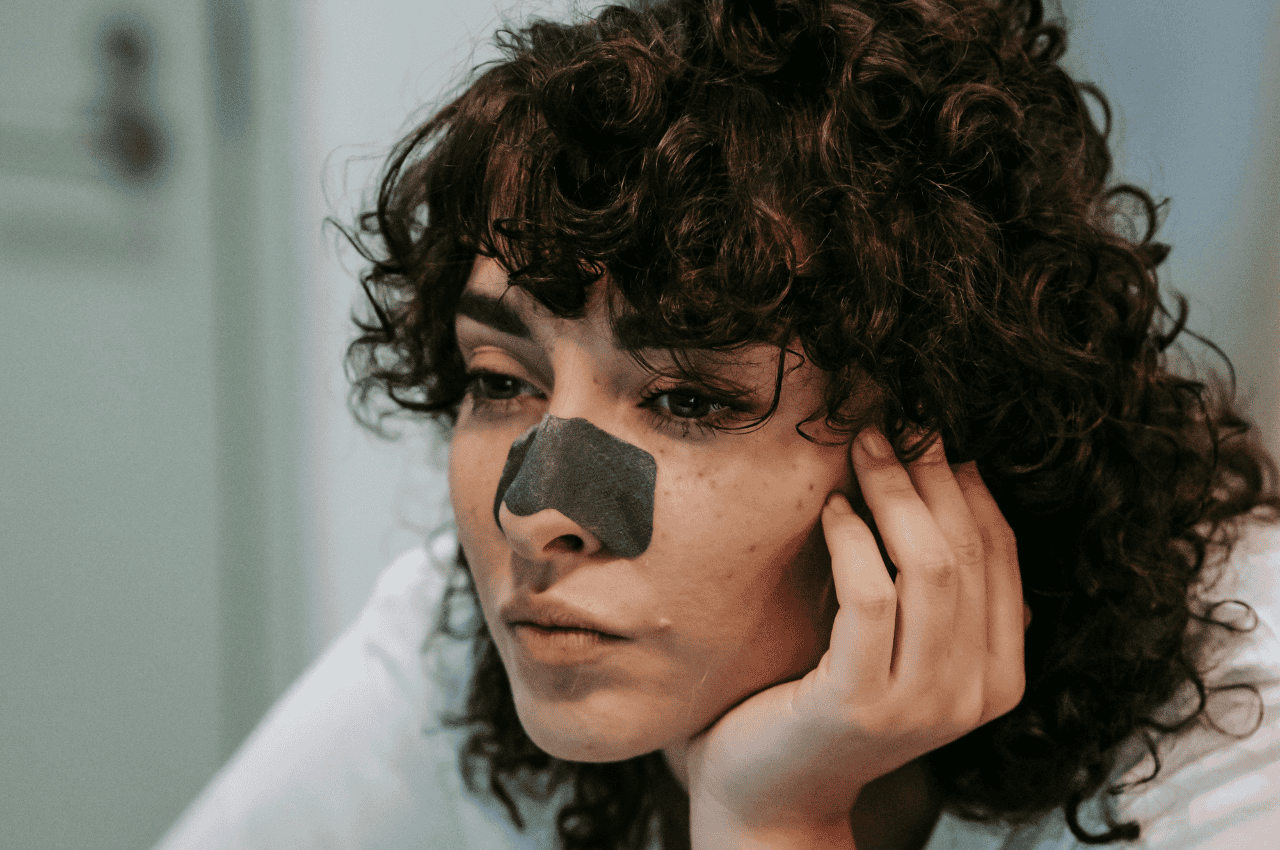
When to Seek Additional Scar Treatment
Most rhinoplasty scars fade well without intervention. However, if you notice a raised, thick, or unusually colored scar after several months, several treatments are available.
Treatments for Visible or Problematic Scars
You have several effective options if you wish to improve the appearance of a rhinoplasty scar:
- Silicone gels or sheets: Regular application can flatten scars and blend discoloration.
- Steroid injections: These are used for overly thick or raised scars.
- Laser therapy: Fractional lasers may help reduce redness and improve texture.
- Microneedling or dermabrasion: These target deeper textural irregularities once healing is complete.
Most patients do not need additional treatment, but access to these interventions provides reassurance and flexibility.
When to Contact Your Surgeon
If you observe persistent swelling, increasing pain, or unusual changes in your scar, schedule a follow-up appointment. Early evaluation can quickly address concerns and prevent more significant problems.
Your Role in Achieving the Best Rhinoplasty Scar Outcome
While some aspects of healing are out of your control, there are several steps you can take to further reduce your risks.
Pre-Surgery Steps
- Choose an experienced rhinoplasty surgeon who specializes in aesthetic facial surgery
- Discuss your unique healing history and any skin issues at your consultation
- Follow all instructions on preparing for surgery, including stopping smoking if applicable
Post-Surgery Habits
- Prioritize wound care and sun protection every day
- Maintain a healthy lifestyle for optimal immune function and tissue repair
- Attend all scheduled follow-ups to catch any concerns early
Consistency and communication with your surgical team are key for the best possible result.
Frequently Asked Questions About Rhinoplasty Scars
Many patients share similar worries and practical questions about rhinoplasty scarring. Here we address a few of the most common topics raised during consultations.
Will My Rhinoplasty Scar Ever Be Noticeable?
For most procedures, the scar is nearly invisible once mature. The thin incision from open rhinoplasty typically blends into the natural shadow under your nose. Closed rhinoplasty leaves no visible scars.
Can I Wear Glasses After Rhinoplasty?
After surgery, you should avoid pressure on the healing nose for several weeks. Our practice will guide you on when it’s safe to resume wearing glasses and if any precautions are necessary.
How Long Before I Can See My Final Rhinoplasty Results?
Initial swelling and redness fade significantly within four to six weeks. However, subtle refinements continue for up to a year. Scar appearance improves steadily throughout this time. If you want to see results from patients at our practice, we encourage you to visit our rhinoplasty gallery.
Should I Choose Open or Closed Rhinoplasty for Minimal Scarring?
Both approaches have benefits, and the best choice depends on your goals and anatomy.
Closed Rhinoplasty Benefits
Closed rhinoplasty avoids external scarring and generally heals quickly. It may be best for simpler changes or when minimal structural work is required.
Open Rhinoplasty Benefits
Open rhinoplasty provides better visualization for more complex changes. The small columellar scar fades well in most patients. For many, the improved precision outweighs the minimal external scar.
Your surgeon will recommend the approach most likely to give you a natural result with minimal long-term visibility.
Services at the Rhinoplasty Center of Long Island to Support Your Healing
Our approach at the Rhinoplasty Center of Long Island emphasizes patient education, careful surgical technique, and personalized aftercare.
We monitor your healing at regular intervals and offer advanced scar management options if needed. Our board-certified surgeon is always available to answer questions and provide support throughout your recovery.
Whether you seek subtle refinement or a more transformative change, our goal is a harmonious, natural-looking nose with the least visible signs of surgery.
Scar Confidence: Moving Forward With Informed Choices
The fear of visible scars should not hold you back from pursuing the nose you want. Most rhinoplasty scars fade to near invisibility with proper planning, skilled surgery, and thoughtful aftercare.
Knowing your risk factors and understanding the healing process empowers you to make the best decisions for your face and your confidence.
If you are considering rhinoplasty and want to discuss your personal options for scar minimization, the caring team at the Rhinoplasty Center of Long Island is here to guide you. We invite you to schedule a consultation to explore safe, beautiful, and natural results custom-tailored to your needs.



